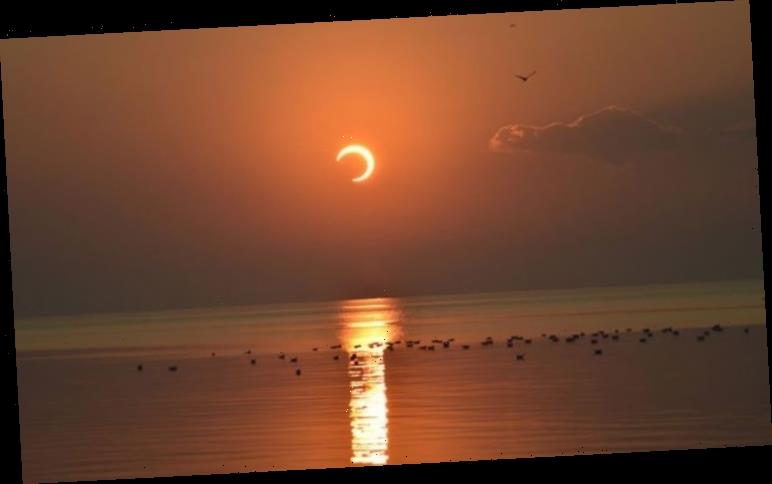Eclipse: NASA explains the moon’s role in a solar eclipse
This Monday, December 14, will see the Moon eclipse our solar system’s star for a whole two minutes and nine seconds from areas of Argentina and Chile. But because few eclipse watchers have made it to the “path of totality” due to coronavirus travel restrictions, many may miss the second total solar eclipse in 18 months.
Should the sky stay clear in these countries, eclipse observers may feel the temperature suddenly descend.
They may also glimpse the Sun’s hotter outer atmosphere known as the corona.
This incredible event occurs when the Earth’s Moon is positioned across from the daytime sky.
This totally covers the Sun’s disk as viewed from our planet, briefly blocking out the entire body of the sun except its outermost layer – the corona.
A solar eclipse produces what looks like a 360-degree sunset.
Both plants and animals should immediately respond as if it was dusk.
We will use your email address only for sending you newsletters. Please see our Privacy Notice for details of your data protection rights.
How to see the 2020 solar eclipse:
The Monday, December 14 total eclipse of the Sun starts in the Pacific Ocean.
The solar eclipse will make landfall in Chile and first appear as a partial solar eclipse at 11.38am 2.28 GMT).
Totality, when the moon completely blocks the sun, will begin in Saavedra at 1pm local time (4pm GMT) and will last for 2 minutes, 4 seconds.
Eclipse viewers living closer to the centre of the path of totality, should experience up to 2 minutes, 10 seconds of totality.
The approximate 56 mile-wide (90km) patch of totality will then travel east across Argentina and Chile.
The last place to see the total eclipse before it moves off the continent and over the Atlantic Ocean will be Argentina’s Salina del Eje.
Totality will there end at 1.25pm local time (4.25pm GMT).
However, those living in many areas of South America should – weather permitting – enjoy a partial solar eclipse.
DON’T MISS
Black hole shock: Scientist’s dire warning to humans [VIDEO]
Asteroid apocalypse: Scientist warns of ‘city-destroying’ space rock [OPINION]
Why ‘Trillion tonne rock hurtling towards Earth’ was ‘bad news’ [EXPLAINED]
This will involve the Moon appearing to take a bite out of the Sun’s disk.
Ice-encrusted continent Antarctica will also be exposed to up to a 40 percent partial solar eclipse.
Above this area of totality, a partial eclipse can be seen as far north as Ecuador.
And an additional treat may also arrive in the form of a comet and bright green meteors during the period of brief totality.
Michael Zeiler of the South African Astronomical Observatory said: “This will be my first miss of total solar eclipse in over a decade and this disappointment is heightened by the realisation newly discovered comet Erasmus should be visible during the total eclipse.
“What a photogenic opportunity. The last prominent comet during a total solar eclipse occurred in 1948.”
However, the chances of observers seeing a comet close to the Sun are most likely remote.“
However, ProfessorJay Pasachoff, of Williams College, Massachusetts suspects the chances of viewing a comet close to the solar eclipse are unlikely.
He’s said: “It could be brighter than it is now and have a tail, but 11 degrees from the corona the sky may not be as dark as it is near the Sun, which is particularly important for seeing a tail.
“It may be worth a wide-angle photo, som
Source: Read Full Article




